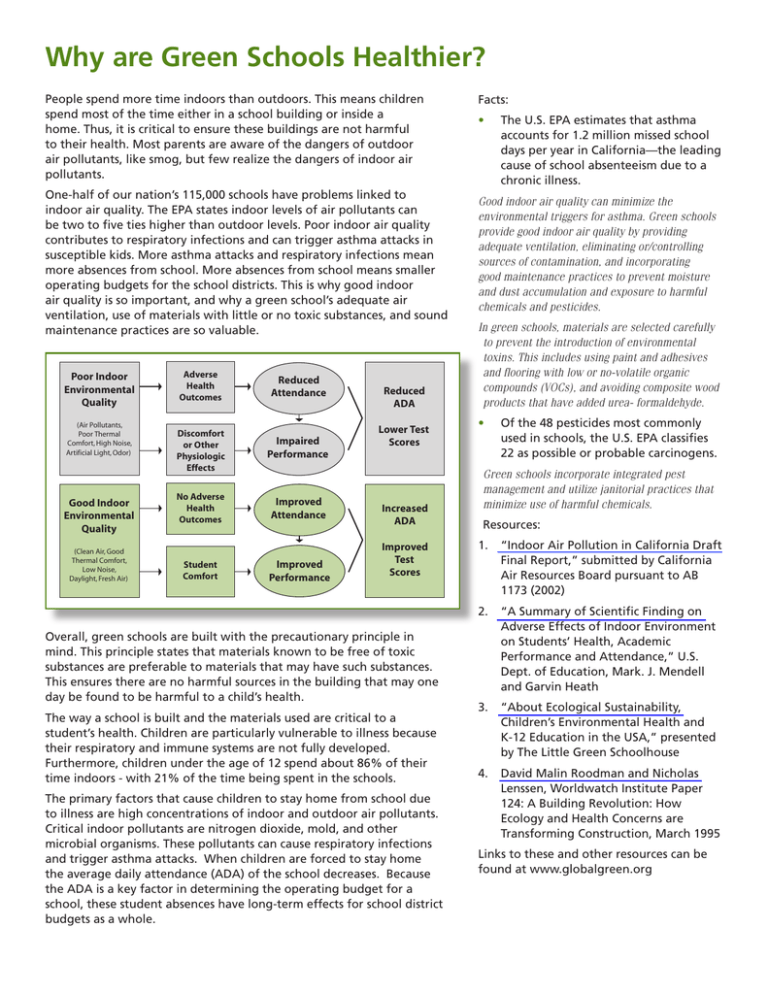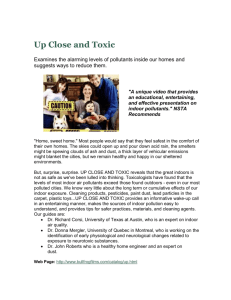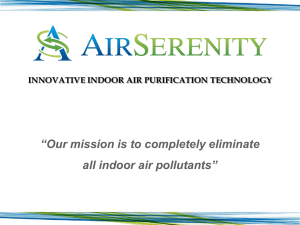GG Green School Initiative final.indd
advertisement

Why are Green Schools Healthier? People spend more time indoors than outdoors. This means children spend most of the time either in a school building or inside a home. Thus, it is critical to ensure these buildings are not harmful to their health. Most parents are aware of the dangers of outdoor air pollutants, like smog, but few realize the dangers of indoor air pollutants. One-half of our nation’s 115,000 schools have problems linked to indoor air quality. The EPA states indoor levels of air pollutants can be two to five ties higher than outdoor levels. Poor indoor air quality contributes to respiratory infections and can trigger asthma attacks in susceptible kids. More asthma attacks and respiratory infections mean more absences from school. More absences from school means smaller operating budgets for the school districts. This is why good indoor air quality is so important, and why a green school’s adequate air ventilation, use of materials with little or no toxic substances, and sound maintenance practices are so valuable. ������������ �������������� ������� ����������������� �������������������� ��������������������� ����������������������� ������������ �������������� ������� ����������������� ����������������� ����������� �������������������� �������� ������� �������� �������� ���������� ����������� ��������� ������������ ������� ��������� ����������� ����������� ������� �������� ��������� ���������� �������� ������� ��������� ����������� �������� ��� ���������� ������ ���������� ��� ��������� ���� ������ Overall, green schools are built with the precautionary principle in mind. This principle states that materials known to be free of toxic substances are preferable to materials that may have such substances. This ensures there are no harmful sources in the building that may one day be found to be harmful to a child’s health. The way a school is built and the materials used are critical to a student’s health. Children are particularly vulnerable to illness because their respiratory and immune systems are not fully developed. Furthermore, children under the age of 12 spend about 86% of their time indoors - with 21% of the time being spent in the schools. The primary factors that cause children to stay home from school due to illness are high concentrations of indoor and outdoor air pollutants. Critical indoor pollutants are nitrogen dioxide, mold, and other microbial organisms. These pollutants can cause respiratory infections and trigger asthma attacks. When children are forced to stay home the average daily attendance (ADA) of the school decreases. Because the ADA is a key factor in determining the operating budget for a school, these student absences have long-term effects for school district budgets as a whole. Facts: • The U.S. EPA estimates that asthma accounts for 1.2 million missed school days per year in California—the leading cause of school absenteeism due to a chronic illness. Good indoor air quality can minimize the environmental triggers for asthma. Green schools provide good indoor air quality by providing adequate ventilation, eliminating or/controlling sources of contamination, and incorporating good maintenance practices to prevent moisture and dust accumulation and exposure to harmful chemicals and pesticides. In green schools, materials are selected carefully to prevent the introduction of environmental toxins. This includes using paint and adhesives and flooring with low or no-volatile organic compounds (VOCs), and avoiding composite wood products that have added urea- formaldehyde. • Of the 48 pesticides most commonly used in schools, the U.S. EPA classifies 22 as possible or probable carcinogens. Green schools incorporate integrated pest management and utilize janitorial practices that minimize use of harmful chemicals. Resources: 1. “Indoor Air Pollution in California Draft Final Report,” submitted by California Air Resources Board pursuant to AB 1173 (2002) 2. “A Summary of Scientific Finding on Adverse Effects of Indoor Environment on Students’ Health, Academic Performance and Attendance,” U.S. Dept. of Education, Mark. J. Mendell and Garvin Heath 3. “About Ecological Sustainability, Children’s Environmental Health and K-12 Education in the USA,” presented by The Little Green Schoolhouse 4. David Malin Roodman and Nicholas Lenssen, Worldwatch Institute Paper 124: A Building Revolution: How Ecology and Health Concerns are Transforming Construction, March 1995 Links to these and other resources can be found at www.globalgreen.org 9 GREEN SCHOOLS INITIATIVE


